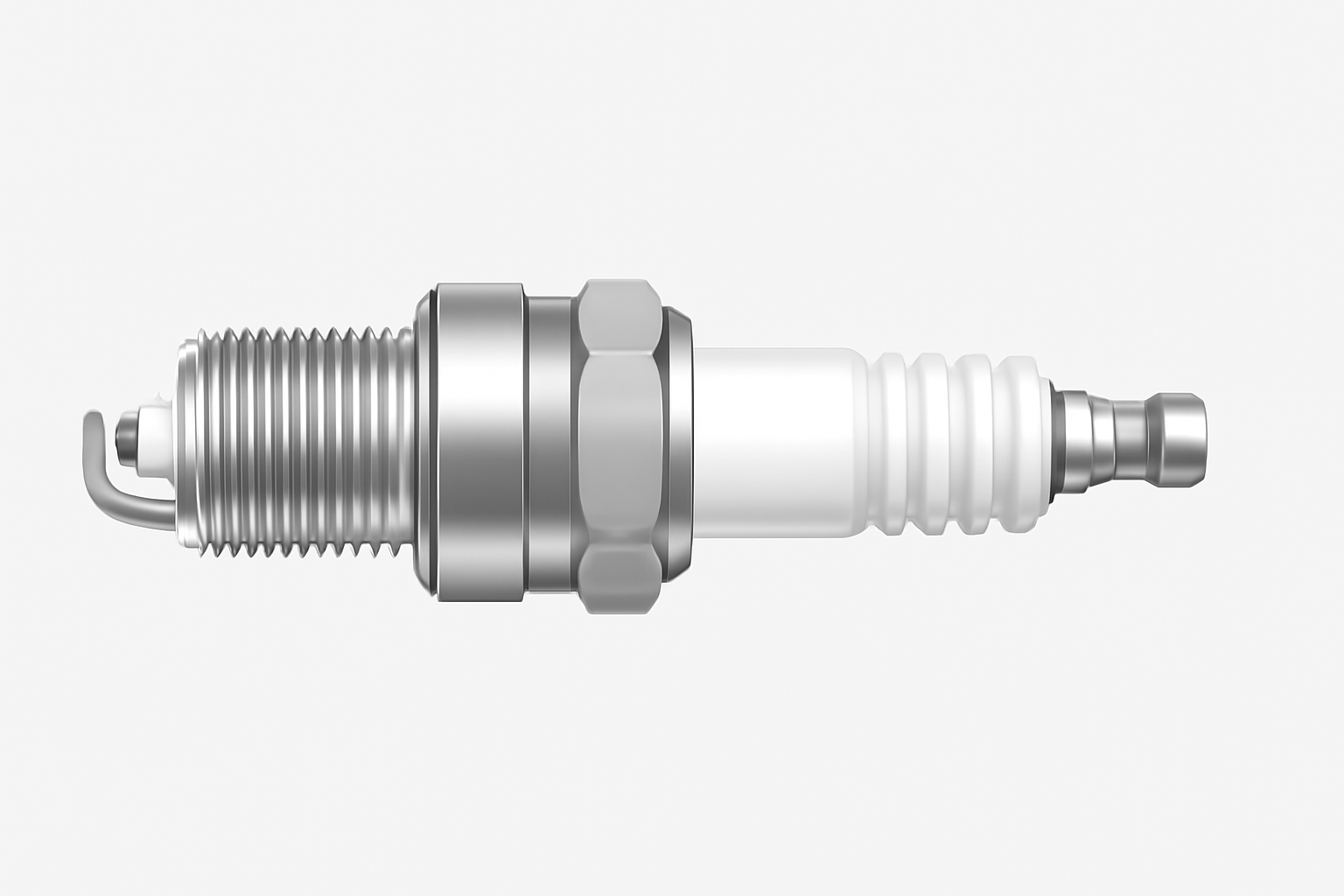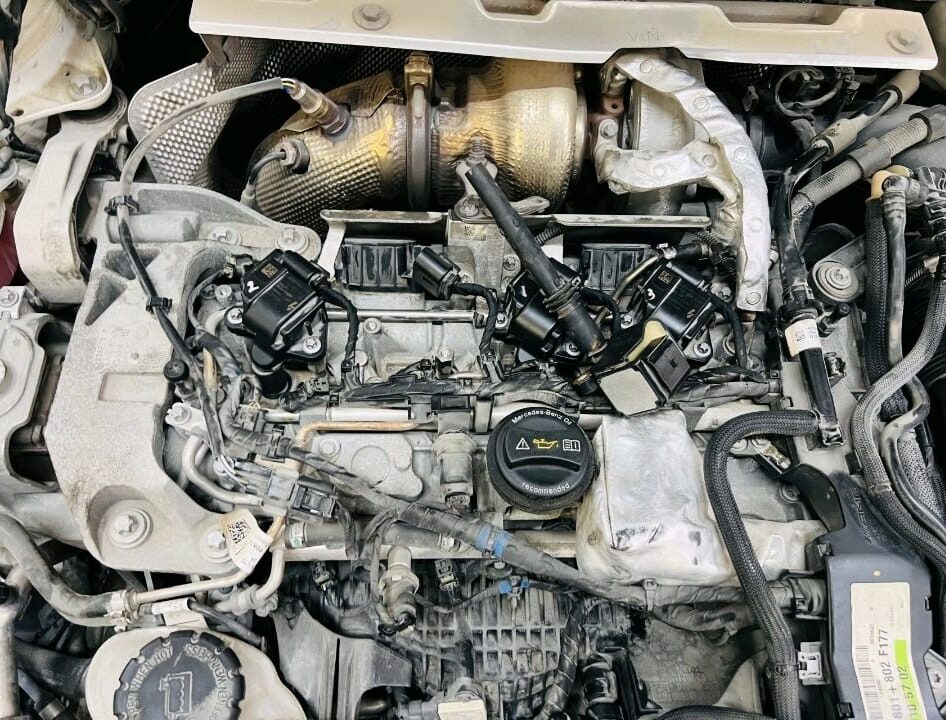What spark plug for my car? The best spark plug for your car depends on the vehicle’s make, model, and engine type. Always check your owner’s manual for the recommended spark plug type (copper, platinum, or iridium), gap size, and heat range to ensure optimal performance and fuel efficiency.
Choosing the right spark plug for a car is essential for maintaining optimal engine performance, fuel efficiency, and overall reliability. With a wide variety of spark plugs available, from different materials to specific heat ranges, it can be confusing to know which one suits your vehicle best.
In this guide, we will simplify the process by explaining what factors you should consider when selecting spark plugs, how they impact your engine, and the benefits of choosing the correct one for your car.

Contents
Why Choosing the Right Spark Plug Matters
The spark plug plays an important role in the car’s engine. It ignites the air-fuel mixture, creating combustion that powers the vehicle. A spark plug that is ill-suited for the engine can lead to misfires, reduced power, and poor fuel efficiency. It can also cause premature wear on engine components. This is why it’s important to pick the right spark plug based on the vehicle’s specifications and driving conditions.
How to Choose the Right Spark Plug for the Car
Choosing the right spark plug for your car depends on several factors. Here’s how to ensure you pick the best one for your needs:
1. Check the Vehicle’s Owner’s Manual
The easiest way to find the right spark plug for your car is by checking the owner’s manual. This manual will list the recommended spark plug model, brand, heat range, and gap size for your engine. Car manufacturers provide this information to ensure your vehicle runs smoothly and efficiently.
If you don’t have the manual, you can usually find the specifications online by searching for your car’s make, model, and year, along with “spark plug specifications.”
2. Spark Plug Type: Copper, Platinum, or Iridium?
Spark plugs come in three main types: copper, platinum, and iridium. Each type offers its own set of advantages:
- Copper Spark Plugs: These are the most basic and affordable type of spark plug. They provide excellent conductivity but have a shorter lifespan compared to platinum or iridium plugs. Copper plugs are ideal for older vehicles or engines with simpler ignition systems.
- Platinum Spark Plugs: Platinum plugs last longer than copper plugs and are more resistant to wear. They are ideal for modern vehicles and those with high-compression engines. Platinum spark plugs also tend to offer better performance and fuel efficiency.
- Iridium Spark Plugs: Iridium plugs are the most durable and efficient type. They offer superior performance, fuel efficiency, and longevity. With a fine-tipped iridium electrode, these plugs provide a stronger, more reliable spark, making them ideal for high-performance and modern engines.

3. Spark Plug Heat Range: What Does It Mean?
The heat range of a spark plug refers to its ability to transfer heat from the combustion chamber to the cooling system. If the heat range is too high, the spark plug can overheat, causing pre-ignition or engine knock. If the heat range is too low, the spark plug might not burn off carbon deposits properly, leading to fouling.
To ensure the correct heat range, always use the spark plug recommended by your car manufacturer. For most vehicles, the factory-installed spark plugs are typically designed for the optimal heat range.
4. Correct Spark Plug Gap
The spark plug gap is the distance between the center and ground electrodes. This gap determines how easily the spark can jump across, creating the ignition. A gap that’s too wide or too narrow can lead to poor engine performance, misfires, or difficulty starting the engine.
While many spark plugs come pre-gapped from the factory, it’s important to check the gap before installation. Your car’s owner’s manual or the spark plug packaging should specify the correct gap size.
5. Choosing the Right Spark Plug Brand
Not all spark plug brands are created equal. While many aftermarket brands make spark plugs that meet or exceed OEM specifications, some are known for higher performance or longer lifespan. Brands like NGK, Bosch, Denso, and Champion are reputable and widely trusted by mechanics and car enthusiasts alike.
When choosing a brand, consider your car’s needs and driving conditions. Some brands may offer higher performance plugs for racing or heavy-duty vehicles, while others may specialize in long-lasting, fuel-efficient plugs for everyday driving.
Signs That Your Spark Plugs Need Replacement
Over time, spark plugs wear out, leading to issues with engine performance. Here are some signs that it’s time to replace your spark plugs:
1. Engine Misfires
If your engine is misfiring, the spark plugs might be worn or faulty. Misfires are caused when the spark plug fails to ignite the air-fuel mixture properly, leading to poor engine performance and rough idling. Read more about Can Spark Plug Wires Cause Misfire?
2. Decreased Fuel Efficiency
Worn spark plugs can cause incomplete combustion, which leads to decreased fuel efficiency. If you’ve noticed a drop in the car’s miles per gallon, it could be time to replace the spark plugs.
3. Difficulty Starting the Engine
If your car is taking longer to start, or if it struggles to start at all, faulty spark plugs may be the culprit. Worn plugs can cause delayed ignition, making it harder for your engine to turn over.
4. Poor Acceleration
If your car is sluggish or experiences hesitation when accelerating, the spark plugs may not be firing properly. This can lead to poor throttle response and decreased engine power.
5. Check Engine Light
A glowing check engine light may indicate spark plug issues. The car’s computer system may detect misfires or irregularities in the ignition process, which will trigger the check engine light.
Installing New Spark Plugs
Once you’ve selected the right spark plugs for your car, it’s time to install them. Here’s a quick guide to installing new spark plugs:
1. Prepare the Necessary Tools
You’ll need a spark plug socket, ratchet wrench, extension bar, torque wrench, and anti-seize lubricant. Be sure to also have the new spark plugs on hand, along with a spark plug gap tool.
2. Remove the Old Spark Plugs
Using the spark plug socket, carefully remove the old spark plugs. You may need to disconnect certain engine components to gain access to the spark plugs.
3. Check the Gap of the New Spark Plugs
Before installing the new spark plugs, use the gap tool to measure and adjust the gap according to the specifications in the vehicle’s owner’s manual.
4. Install the New Spark Plugs
Screw the new spark plugs into place by hand, then use the torque wrench to tighten them to the manufacturer’s recommended torque setting. Be careful not to overtighten the plugs, as this can cause damage to the threads.
5. Reassemble the Engine
Once the spark plugs are installed, reassemble any engine components that were removed to gain access. Start the engine and check for any issues such as misfires or rough idling.
Frequently Asked Questions
Here are some FAQs about choosing spark plug for the car –
1. How do I know which spark plug is right for my car?
The best way to determine the right spark plug for your car is to consult your vehicle’s owner’s manual. You can also ask an auto parts store professional or refer to online databases for your vehicle’s specific spark plug requirements.
2. How often should I replace my spark plugs?
Spark plugs should typically be replaced every 30,000 to 100,000 miles, depending on your vehicle’s make and model. Check your owner’s manual for the recommended interval.
3. Can I use any brand of spark plugs?
It’s important to use spark plugs that meet the manufacturer’s specifications for your car. While you can use aftermarket brands, ensure that they match the required type, heat range, and gap size.
4. Can bad spark plugs cause engine damage?
Yes, worn or faulty spark plugs can lead to engine misfires, poor fuel efficiency, and even engine damage if not replaced in a timely manner.
5. Can I install spark plugs myself?
Yes, replacing spark plugs is a relatively simple task that can be done with the right tools. However, if you’re not comfortable doing it yourself, a mechanic can easily perform the replacement.
Conclusion
Choosing the right spark plug for your car is essential for maintaining engine performance, fuel efficiency, and longevity. By considering factors such as the type of spark plug (copper, platinum, or iridium), the heat range, gap size, and brand, you can ensure that your engine runs smoothly and efficiently.





